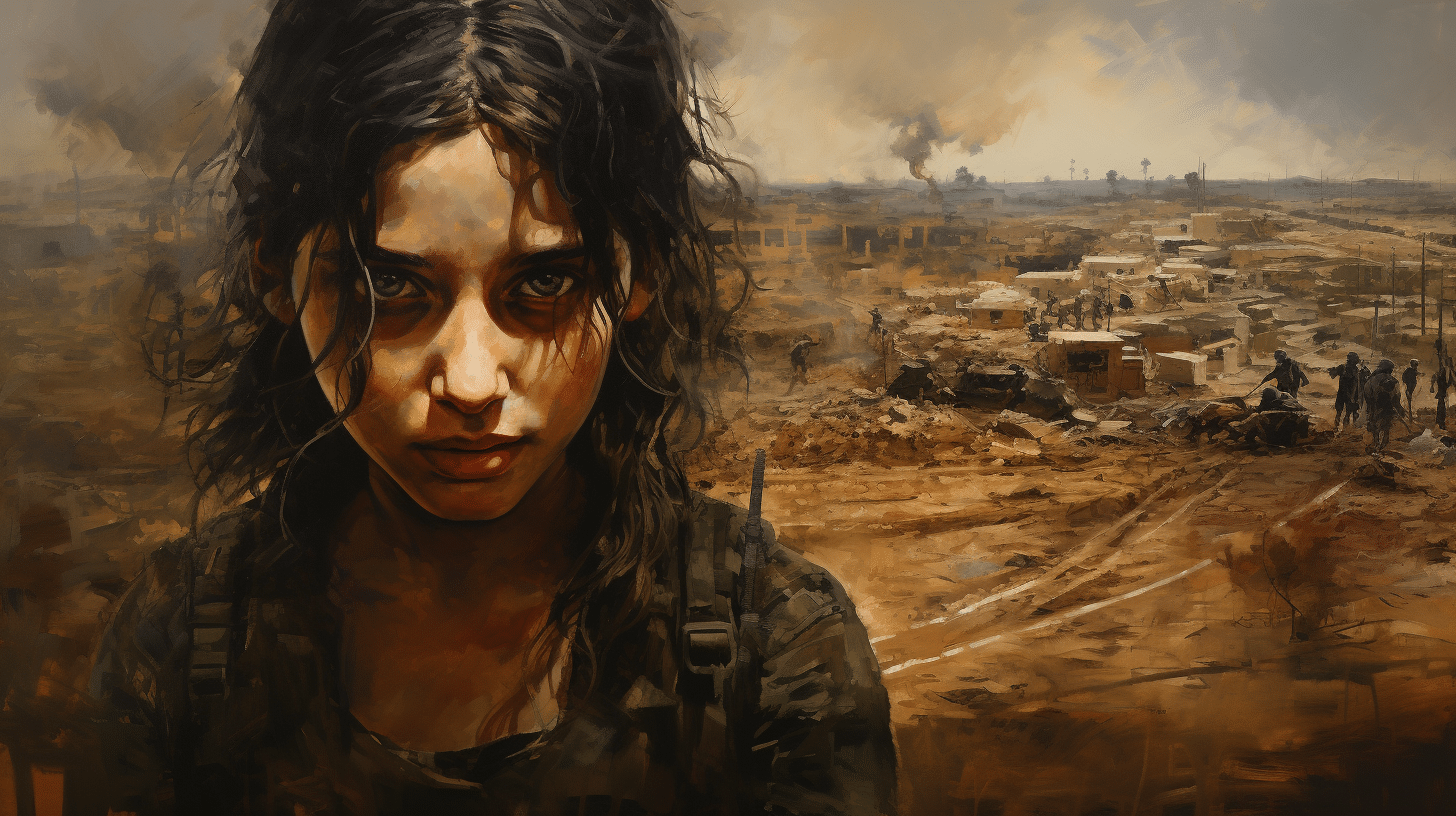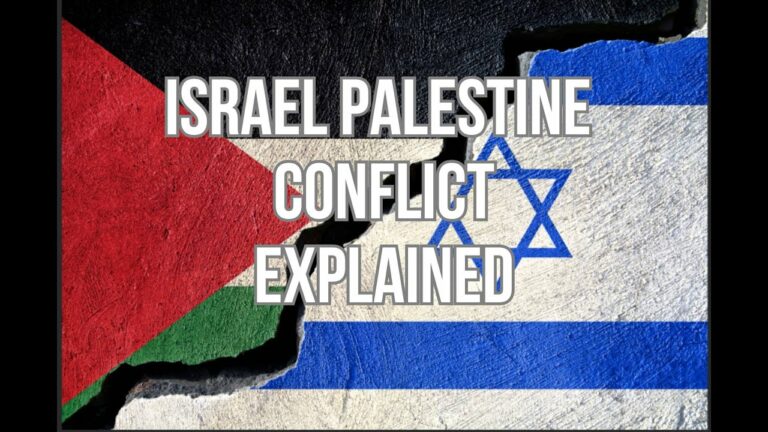History has shown us that the path to peace is often paved with understanding and empathy. In a world filled with divisive conflicts, it becomes crucial for us to approach complex issues like the Israel-Hamas conflict with objectivity and a willingness to consider multiple perspectives. Only by doing so can we hope to find common ground and work towards a peaceful resolution.
The Israel-Hamas issue is one that has spanned decades, with deep-rooted historical, political, and religious complexities. It is a conflict that has claimed the lives of countless individuals and continues to shape the lives of millions. Understanding its historical context can provide us with valuable insights into the challenges faced by both sides.
The conflict traces its roots back to the early 20th century when tensions arose between Jewish immigrants and the Arab population in the region. The establishment of Israel as a nation-state in 1948 further intensified these tensions, leading to multiple wars and ongoing territorial disputes. The issue is not merely about land and borders but also encompasses religious, cultural, and national identity struggles.
Approaching this issue requires us to acknowledge the pain and suffering experienced by both Israelis and Palestinians. By recognizing that each side has their own narratives and aspirations, we can begin to move towards a more inclusive and balanced understanding of the conflict.
In this short article, we will delve into the complexities of the Israel-Palestine issue, highlighting the importance of objectivity and understanding multiple perspectives. By doing so, we hope to contribute towards a more informed dialogue and foster a deeper sense of empathy among readers.”
I. Historical Background:
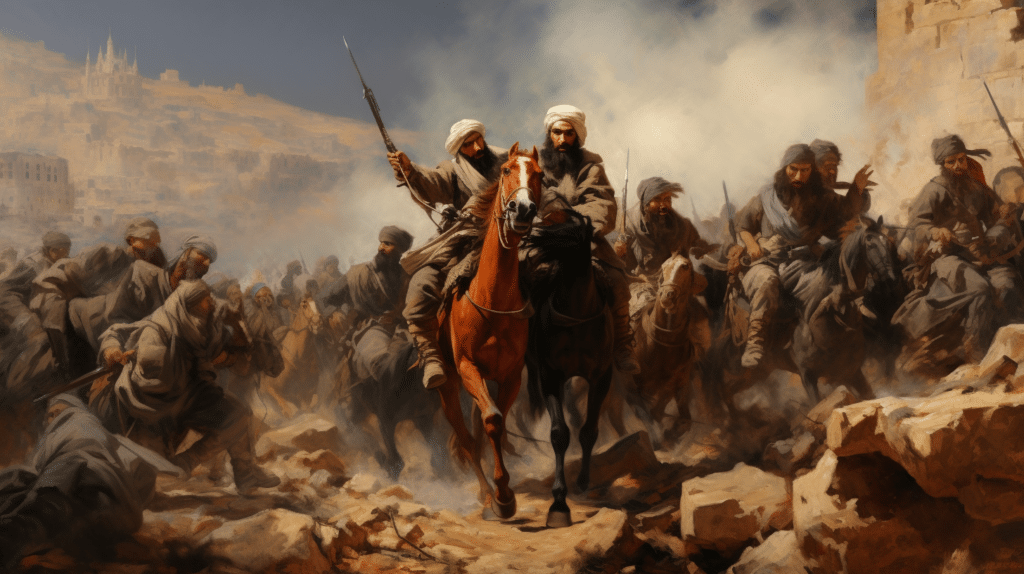
The Israel-Palestine conflict has its roots in a series of historical events that have shaped the region for over a century. Understanding this historical background is essential to gaining a comprehensive understanding of the complexities at play.
In the early 20th century, waves of Jewish immigrants began arriving in Palestine, primarily driven by the Zionist movement seeking to establish a Jewish homeland. This influx of Jewish settlers sparked tensions with the Arab population already residing in the region. The British Mandate of Palestine, established after World War I, further intensified these tensions.
In 1947, the United Nations proposed a partition plan that would divide Palestine into separate Jewish and Arab states. While the Jewish community accepted the plan, the Arab leaders rejected it, resulting in a civil war between Jewish and Arab militias. This conflict ultimately led to the establishment of the state of Israel in 1948.
The creation of Israel also resulted in the displacement of hundreds of thousands of Palestinian Arabs, leading to what is known as the Palestinian refugee crisis. This displacement has been a key issue fueling resentment and fueling ongoing conflict.
Another crucial development in the history of the conflict is the formation of Hamas. Established in 1987 during the First Intifada (Palestinian uprising against Israeli occupation), Hamas emerged as a resistance movement opposing Israeli occupation and advocating for Palestinian self-determination. While some view Hamas as a legitimate resistance organization, others consider it a terrorist group due to its use of violence against Israeli civilians.
Hamas’s rise to power was further cemented when it won parliamentary elections in 2006, leading to a political division between Hamas and Fatah (the dominant Palestinian political party). The subsequent blockade imposed on Gaza by Israel and Egypt intensified the humanitarian crisis in the region.
Understanding these historical events provides us with important context for the ongoing conflict, highlighting how historical grievances, displacement, and resistance movements have shaped the current dynamics between Israelis and Palestinians. It is important to remember that both sides have experienced suffering and loss, and acknowledging these experiences is crucial for fostering empathy and finding a path toward peace.
II. Triggers and Escalation:
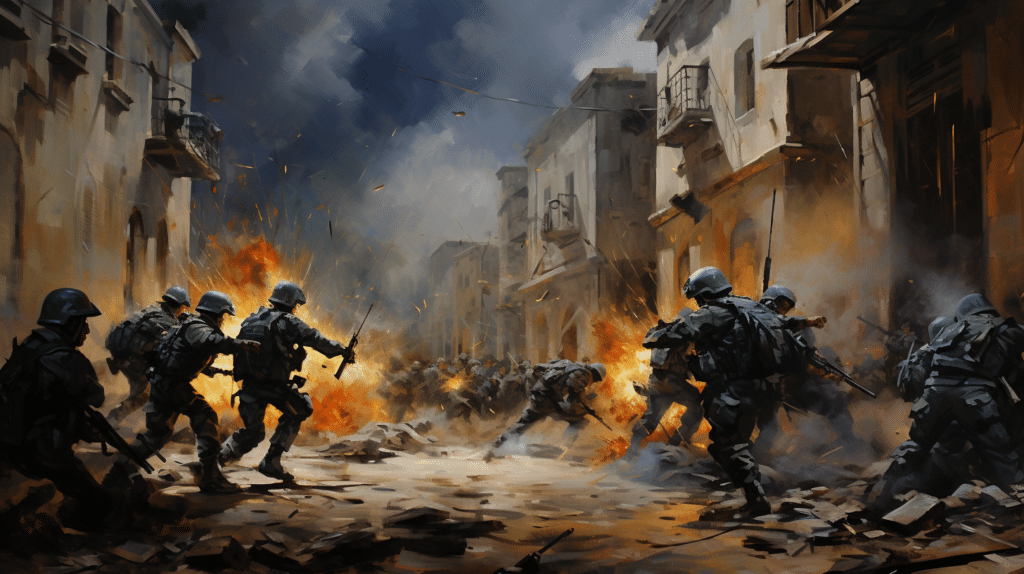
The Israel-Palestine conflict has been marked by periods of relative calm and intense violence. Understanding the triggers and escalations that lead to outbreaks of violence between Israel and Hamas provides insight into the complex dynamics at play.
One of the key triggers for the recent escalation in violence was the eviction of Palestinian families from the Sheikh Jarrah neighborhood in East Jerusalem. This sparked protests and clashes between Palestinians and Israeli police, escalating tensions on both sides. The heavy-handed response from Israeli security forces during the holy month of Ramadan further exacerbated the situation, leading to widespread outrage and protests.
In response to these events, Hamas launched a barrage of rockets targeting Israeli cities, including Jerusalem and Tel Aviv. This escalated the conflict, leading to Israeli airstrikes in Gaza in an attempt to neutralize Hamas’s rocket capabilities and dismantle their infrastructure. The cycle of rocket attacks and airstrikes continued for several days, resulting in a significant loss of life on both sides and widespread destruction.
Political factors also play a significant role in the escalation of violence. Internal politics within both Israel and Palestine often shape the approach taken by their respective governments. Elections, power struggles, and disputes over governance further complicate efforts to find a peaceful resolution.
In Israel, political considerations have played a role in the response to Hamas’s rocket attacks. Prime Minister Benjamin Netanyahu faced domestic political challenges, with a fragile coalition government formed after four inconclusive elections within two years. The Israeli government’s response to Hamas’s attacks is often influenced by its need to maintain support from right-wing parties and demonstrate strength in national security matters.
Similarly, political divisions within Palestine have influenced Hamas’s actions. As mentioned earlier, Hamas won parliamentary elections in 2006 but faced opposition from Fatah, leading to a divided governance structure. This division has made it challenging for the Palestinian leadership to present a united front in negotiations with Israel, which can hinder progress toward peace.
It is important to recognize that these triggers and escalations are not isolated incidents but part of a larger historical context. The recent outbreak of violence is just one chapter in a long-standing conflict marked by cycles of violence, ceasefires, and renewed tensions.
By understanding the triggers and political factors at play, we can gain a deeper appreciation of the complexities involved and work towards finding solutions that address the root causes of the conflict. It is crucial for all parties involved to prioritize de-escalation, dialogue, and diplomacy to prevent further loss of life and destruction.
III. The Root Causes:
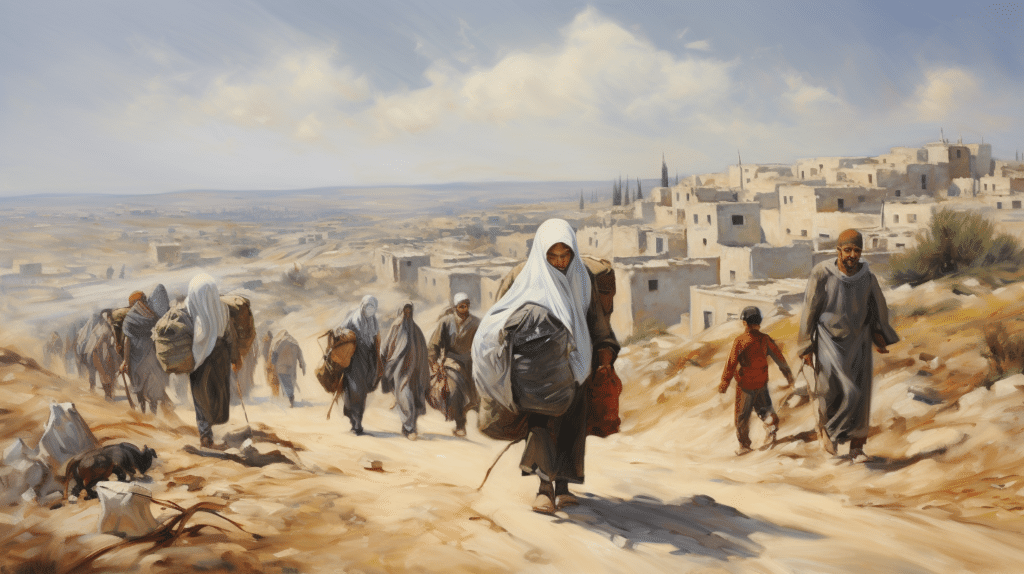
The Israel-Palestine conflict is a multi-faceted issue with deep-rooted underlying causes that contribute to its complexity. These factors encompass various aspects, including land ownership, settlements, and the narratives of religion, culture, and nationalism.
Land ownership and territorial disputes have long been central to the conflict. Both Israelis and Palestinians claim historical and religious ties to the land, creating competing narratives. The establishment of Israel in 1948 led to the displacement of Palestinians from their homes and the creation of a new state. This displacement has resulted in the ongoing issue of Palestinian refugees seeking the right to return to their ancestral lands.
One of the contentious aspects of land ownership is the establishment of Israeli settlements in the occupied territories of the West Bank and East Jerusalem. Israeli settlements, considered illegal under international law, have been a major source of tension. Palestinians argue that these settlements encroach upon their land, making it difficult to establish a viable Palestinian state. The expansion of settlements further complicates efforts to negotiate a two-state solution.
Religion also plays a significant role in shaping perspectives and narratives. For Israelis, their connection to the land is deeply rooted in Judaism, with historical and religious ties to Jerusalem and other sacred sites. Many Israelis view their presence in the land as a fulfillment of biblical prophecy and a right granted by divine providence.
Similarly, for Palestinians, Islam holds great significance in their identity and connection to the land. The Al-Aqsa Mosque in Jerusalem is one of the holiest sites in Islam, making the city a focal point for religious sentiment. The struggle to maintain access and control over religious sites has often ignited tensions between different religious communities.
Cultural and nationalistic aspirations also contribute to the conflict. Both Israelis and Palestinians have developed distinct national identities over time, each seeking self-determination within their own homeland. The desire for recognition, sovereignty, and a sense of belonging fuels the aspirations of both sides.
These underlying causes interact in complex ways, perpetuating a cycle of conflict and impeding the search for a peaceful resolution. Each side sees itself as the victim and seeks to protect its own interests and aspirations. It is essential to recognize and respect these different perspectives in order to foster understanding and empathy.
By addressing the root causes of the conflict, such as land ownership, settlements, and the narratives of religion, culture, and nationalism, it becomes possible to work toward solutions that respect the rights, aspirations, and dignity of both Israelis and Palestinians. Achieving a just and lasting peace will require a comprehensive approach that addresses these underlying issues and recognizes the shared humanity of all those affected by the conflict.
IV. Humanitarian Consequences:
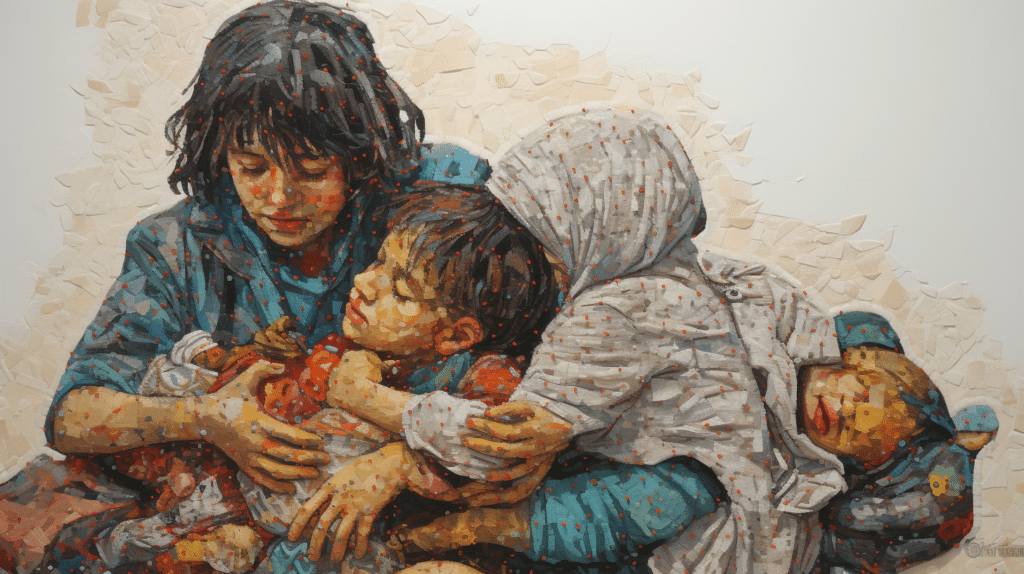
The Israel-Palestine conflict has had devastating humanitarian consequences for civilians on both sides. The cycle of violence, including rocket attacks, airstrikes, and clashes, has resulted in a significant loss of life, displacement, and the destruction of vital infrastructure.
Casualties are a tragic reality of any armed conflict, and the Israel-Palestine conflict is no exception. Innocent civilians, including women, children, and the elderly, often bear the brunt of the violence. The recent escalation in May 2021 saw hundreds of Palestinians, including many children, killed and thousands injured. On the Israeli side, several civilians were also killed by rocket attacks launched by Hamas.
Displacement is another major consequence of the conflict. Palestinian families have been uprooted from their homes due to evictions, demolitions, and the impact of military operations. The Palestinian refugee crisis, dating back to the establishment of Israel in 1948, continues to affect generations of Palestinians who are unable to return to their ancestral lands or find stable living conditions.
The destruction of infrastructure further exacerbates the humanitarian situation. Schools, hospitals, homes, water facilities, and electrical networks have been damaged or destroyed in the course of the conflict. These vital services are critical for the well-being and survival of communities on both sides.
Humanitarian organizations play a crucial role in providing aid and assistance to those affected by the conflict. However, they face numerous challenges in delivering their services effectively. The volatile security situation often restricts access to affected areas, hindering the timely delivery of humanitarian aid. Limited resources and funding pose additional obstacles to meeting the growing needs of affected populations.
In Gaza, for example, the blockade imposed by Israel and Egypt severely restricts the flow of goods and services into the territory, exacerbating an already dire humanitarian situation. The blockade impacts access to healthcare, clean water, electricity, and basic goods, leading to a humanitarian crisis that affects the daily lives of ordinary Palestinians.
The humanitarian consequences of the Israel-Palestine conflict are deeply concerning. The loss of life, displacement, and destruction of infrastructure have long-lasting impacts on individuals, families, and communities. It is crucial for the international community to prioritize the protection of civilians, support humanitarian efforts, and work towards finding a sustainable solution that addresses the root causes of the conflict.
Efforts must be made to ensure access to essential services, uphold international humanitarian law, and facilitate the work of humanitarian organizations on the ground. Providing assistance and support to affected populations is essential for alleviating suffering and fostering hope for a better future.
V. International Responses:
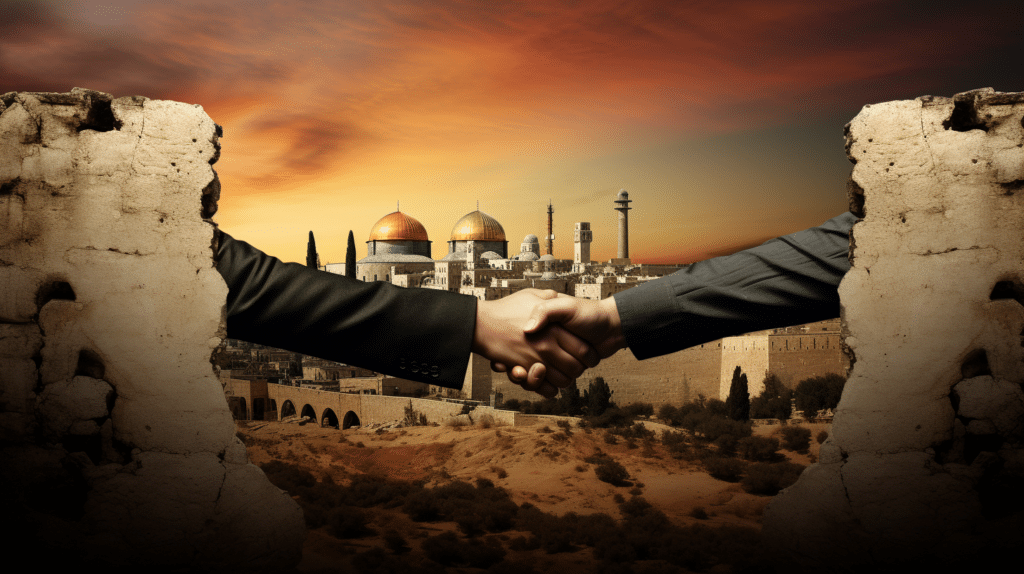
The Israel-Palestine conflict has garnered significant attention from the international community, with various countries and international organizations expressing their reactions and positions. The responses have been diverse, reflecting differing perspectives and interests.
Many countries have called for an end to the violence and the protection of civilians on both sides. Some have condemned the rocket attacks by Hamas as acts of terrorism, while also expressing concern over the heavy-handed Israeli response and the resulting civilian casualties. Others have emphasized the need for a negotiated two-state solution, recognizing the right of both Israelis and Palestinians to self-determination.
International organizations, such as the United Nations (UN) and the European Union (EU), have also been involved in efforts to address the conflict. The UN has repeatedly called for a cessation of violence, the protection of civilians, and a resumption of meaningful peace talks. The Security Council has held meetings to discuss the situation, but due to divisions among its members, reaching a consensus on a resolution has proven challenging.
Diplomatic efforts to establish ceasefires and facilitate peace negotiations have been ongoing but often face obstacles. Various mediators, including Egypt, Qatar, and the United States, have played roles in brokering temporary truces or facilitating indirect negotiations between Israel and Hamas. However, achieving a lasting resolution remains elusive, given the complex dynamics and deeply entrenched positions of both sides.
Media coverage plays a crucial role in shaping public opinion and perceptions of the conflict. The reporting can vary depending on the news outlet’s bias or agenda. Some media sources may focus on civilian casualties and human suffering, while others may highlight the security concerns faced by Israel. Biased reporting can contribute to polarization and hinder understanding of the nuances of the conflict.
Social media has also become a powerful platform for disseminating information and shaping public discourse on the Israel-Palestine conflict. However, it is important to critically evaluate sources and consider multiple perspectives when engaging with social media content, as misinformation and propaganda can spread rapidly.
The international responses to the Israel-Palestine conflict demonstrate the complexities and challenges of finding a resolution. Diverse positions, geopolitical considerations, and differing interpretations of international law make it difficult to achieve consensus. However, continued diplomatic efforts, dialogue, and an inclusive approach that considers the rights and aspirations of both Israelis and Palestinians are crucial for progress towards a just and sustainable peace.
VI. Broader Implications:
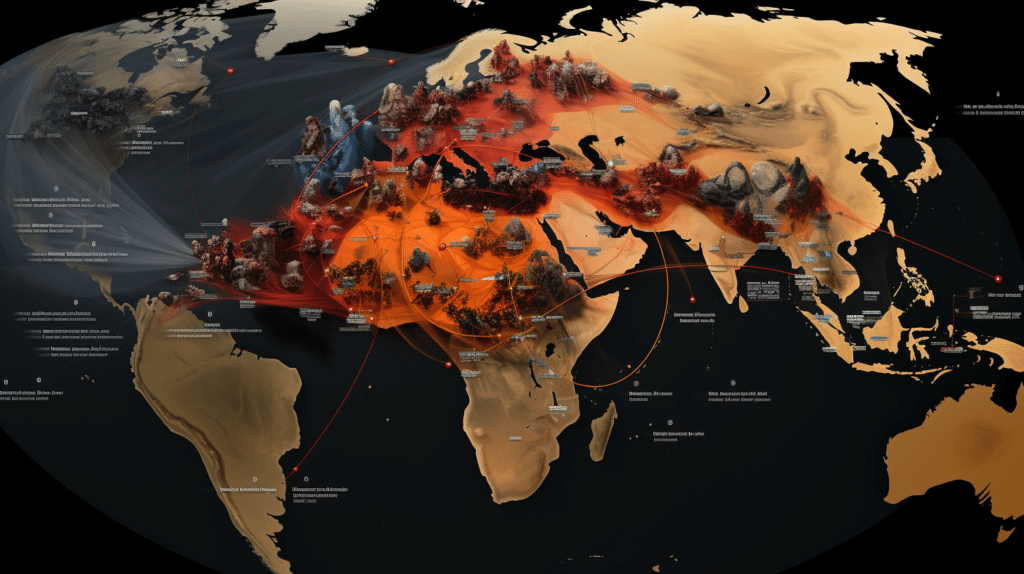
The Israel-Palestine conflict reverberates beyond the borders of Israel and Palestine, having significant implications for regional stability and global dynamics. Understanding these broader implications is crucial for comprehending the wider impact of the conflict.
Regionally, the conflict has strained relations between Israel and its neighboring countries. Historic tensions with countries like Lebanon, Syria, and Jordan have been further exacerbated by the ongoing conflict. In recent years, the normalization of diplomatic relations between Israel and several Arab states, such as the United Arab Emirates, Bahrain, Sudan, and Morocco, has added a new dimension to regional dynamics. The conflict and its unresolved nature continue to be a key factor in shaping regional alliances, with potential ripple effects on stability in the Middle East.
The unresolved status of Jerusalem, particularly the issue of control over religious sites such as the Al-Aqsa Mosque and the Church of the Holy Sepulchre, has religious significance beyond Israel and Palestine. The status of Jerusalem is a matter of great concern for Muslims, Christians, and Jews around the world. Any tensions or clashes related to these religious sites can spark outrage and protests globally.
On a global scale, the Israel-Palestine conflict has implications for geopolitical alliances and security threats. The conflict has become intertwined with larger geopolitical rivalries, with different countries supporting either Israel or Palestine based on their strategic interests. This geopolitical dimension further complicates efforts to reach a peaceful resolution.
For example, Iran has positioned itself as a supporter of Palestinian resistance movements against Israel. Its support for Hamas and other armed groups adds fuel to the conflict while also heightening tensions between Iran and Israel. The role of other regional actors such as Saudi Arabia and Turkey in relation to the conflict further adds to the complexity of alliances and rivalries.
The conflict also has implications for global security threats. The unresolved conflict can serve as a rallying point for extremist groups who exploit grievances to recruit and radicalize individuals. The spread of violent ideologies and acts of terrorism, in the name of the Israel-Palestine conflict, can have far-reaching consequences.
Furthermore, the conflict has implications for international law and the perception of justice. The failure to find a resolution based on international law and United Nations resolutions undermines the credibility of the international system. This has ramifications for conflicts in other parts of the world, as it sends a message that powerful actors can act with impunity, potentially fueling further conflicts and destabilizing other regions.
In conclusion, the Israel-Palestine conflict extends far beyond its immediate borders, impacting regional stability and global dynamics. The interplay between regional rivalries, geopolitical alliances, religious sensitivities, and security threats makes it a complex issue with far-reaching implications. Resolving this conflict in a just and sustainable manner is not only crucial for Israelis and Palestinians but also for promoting stability, peace, and adherence to international law on a global scale.
Conclusion:
Throughout this discussion, we have explored various aspects of the Israel-Palestine conflict, highlighting key points that shed light on its causes, consequences, and broader implications. Let’s recap some of these key points:
- Triggers and Escalation: The conflict is often sparked by events such as evictions, protests, rocket attacks, and airstrikes. Political factors, including elections and power struggles, further complicate the situation.
- The Root Causes: Land ownership, settlements, and competing religious, cultural, and nationalistic narratives contribute to the complexity of the conflict.
- Humanitarian Consequences: Civilians on both sides suffer devastating impacts, including casualties, displacement, and infrastructure destruction. Humanitarian organizations face challenges in providing aid amidst the volatile security situation.
- International Responses: Countries and international organizations have varied reactions and positions. Diplomatic efforts to establish ceasefires and peace negotiations continue, but obstacles persist. Media coverage plays a role in shaping public opinion.
- Broader Implications: The conflict has reverberations beyond Israel and Palestine, affecting regional stability and global dynamics. Tensions with neighboring countries and geopolitical rivalries add complexity. Global security threats and implications for international law are also at stake.
In understanding complex conflicts like the Israel-Palestine issue, it is crucial to approach the topic with objectivity. Recognizing the multifaceted nature of the conflict allows for a more nuanced understanding of the perspectives and grievances of all parties involved.
Dialogue, empathy, and efforts toward peaceful resolutions are essential for moving forward. It is imperative to prioritize the protection of civilians, address the root causes of the conflict, and work toward a just and sustainable solution that respects the rights and aspirations of both Israelis and Palestinians.
By promoting open conversations that foster understanding and respect for diverse perspectives, we can contribute to a more peaceful world where conflicts are resolved through diplomacy rather than violence. Let us strive for empathy and solidarity, recognizing that peace is achievable when we approach conflicts with an unwavering commitment to justice and a genuine desire for a better future for all.
What Does Ifá Say About the Conflict Between Israel, and Hamas?
While it is important to note that the Ifá system is culturally and religiously specific and may not directly map onto other belief systems or geopolitical situations, there are thematic lessons that could potentially offer insights into conflicts like that between Israel and Hamas.
- Transformation Through Struggle: Ogunda Meji often suggests that struggle is a precursor to transformation and growth. In the context of the Israel-Hamas conflict, this could be a call to view the struggle not just as an unending cycle of violence but as an opportunity for transformative change.
- Cause and Effect: The Odu emphasizes the law of cause and effect, meaning that actions have consequences. This could serve as a reminder to all parties involved that short-term military victories might result in long-term social, ethical, or international repercussions.
- Ethical Responsibility: Although Ogunda Meji can indicate conflict and war, it also places importance on ethical conduct, even in times of struggle. This could encourage both parties to consider the human cost of the conflict and strive for actions that mitigate harm to civilians.
- Resolution Through Dialogue: While the Odu does not explicitly speak to negotiation, the broader message of transformation might imply that durable peace is possible through dialogue and understanding, rather than perpetual conflict.
- Dynamic Equilibrium: Ogunda Meji also suggests that life is a dynamic process, always changing and never static. This could serve as a reminder that the present situation is not immutable and that the possibility for change exists, even in seemingly intractable conflicts.
Another Odu that could offer further guidance toward the resolution of conflicts like that between Israel and Hamas is “Osá Meji.” Osá Meji is often associated with confusion and conflict, but also the potential for reconciliation and balance. It serves as a reminder that even in the midst of turmoil, equilibrium can be restored.
Key Themes:
- Complexity of Conflict: Osá Meji acknowledges the complexities that often accompany conflicts, including the emotional and psychological aspects. This could remind stakeholders that conflicts like Israel-Hamas are multifaceted and can’t be fully understood or resolved through a singular approach.
- The Need for Wisdom: This Odu places a great emphasis on wisdom and insight. In the context of the Israel-Hamas conflict, this could suggest that a resolution will require not just political maneuvering but also genuine wisdom, discernment, and an understanding of the nuances of the situation.
- Potential for Reconciliation: Osá Meji holds out the promise of balance and reconciliation following conflict, but this is often contingent upon truthful reflection and sincere effort. This could encourage all parties to consider ways in which they might come to a peaceful resolution, even if that seems unlikely in the current situation.
- Harmony Through Mutual Respect: The Odu implies that harmony is possible when there is mutual respect and when each party understands and acknowledges the other’s needs and desires. This could be a call for empathy and a balanced perspective in conflict resolution efforts.
- Consequences of Ignorance: Osá Meji also warns of the detrimental effects of ignorance and a lack of understanding, suggesting that failing to fully grasp the other side’s concerns can lead to prolonged conflict.
It’s crucial to apply these insights with sensitivity and understanding of the specific political, cultural, and religious factors at play in the Israel-Hamas conflict. Also, the interpretation of Ogunda Meji and Osa Meji may differ among practitioners and scholars of Ifá, and so my interpretation should be taken as a general thematic understanding rather than a prescriptive solution to such a complex issue.


